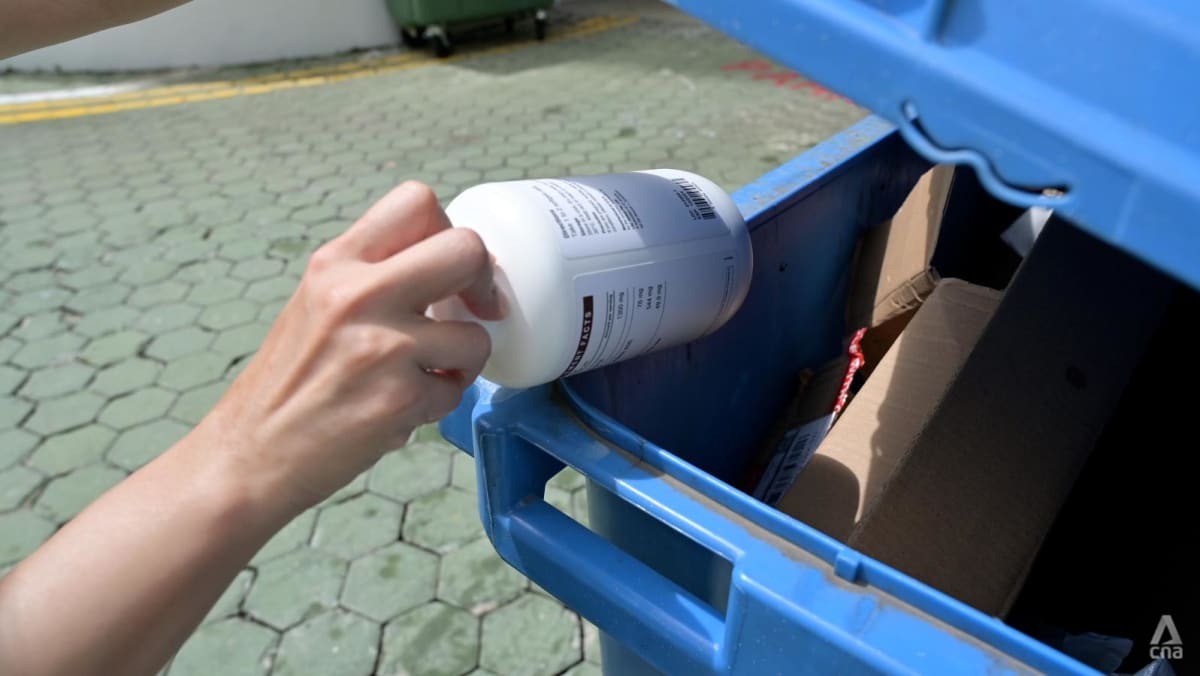The agency also reported a 49,000-tonne drop in the amount of wood waste recycled, driven by the closure of one biomass plant and extended maintenance at another. This reduced Singapore’s short-term wood waste processing capacity.
Another major contributor was the sharp fall in paper recycling – from 52 per cent to 32 per cent over the past ten years. The decline is driven by factors such as the cost of collecting and freight, as well as commodity prices, NEA said.
FOCUS ON FOOD, PAPER AND PLASTIC
Singapore aims to increase its overall recycling rate to 70 per cent by 2030, in line with the country’s Zero Waste Masterplan.
To support this goal, NEA is stepping up efforts in three key waste streams – food, paper and plastics, as these categories make up the largest share of waste that is not being recycled.
Food waste recycling rates have climbed from 13 per cent in 2014 to 18 per cent in 2024. Since March 2024, new large commercial and industrial food waste generators have been required to segregate, treat and report their food waste. These rules will extend to existing players after the Integrated Waste Management Facility is completed from 2027.
In March this year, NEA supported the development of guidelines for sustainable e-commerce packaging to reduce waste and promote paper recycling.
There are currently about 80 licensed general waste disposal facilities handling paper/cardboard waste locally. For Singapore’s paper to be recycled, it has to be baled and exported overseas, as there are no local paper pulping facilities, said the agency.
For plastic recycling, NEA will roll out a beverage container return scheme next April. Consumers who return empty beverage containers will receive a 10-cent deposit refund.
NEA noted that contamination in communal recycling bins remains a challenge. To overcome this, the agency is introducing targeted efforts like the beverage container return scheme to collect cleaner streams of recyclables.
Given Singapore’s limited space, we need to very effectively manage the waste we generate, by reducing and reusing to minimise waste, and recycling to turn the waste back into a resource, said Dr Puthucheary. “We need to do all this so that we can extend the life of our only landfill, Semakau Landfill, which is projected to be full by 2035.”
He added that individuals should continue to do their part by carrying out “simple actions”, such as being careful about the amount of food they buy and cook, avoiding single-use disposables and “treating our blue bins well” by recycling properly, he said.
“We should also continue to innovate and find new ways to turn trash into treasure,” he said.
